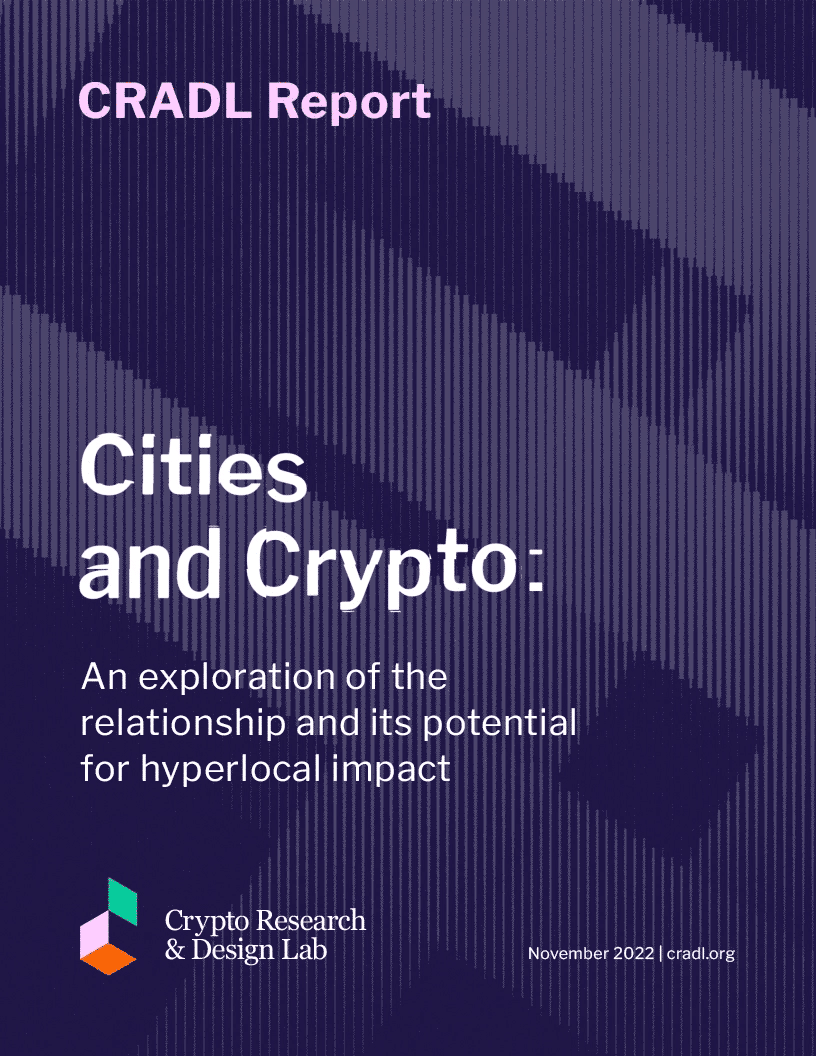Cities and Crypto
An exploration of this relationship and its potential for funding hyperlocal impact
This report explores the relationship between crypto and cities in the United States. It features profiles on Web3 and non-Web3 interventions that better facilitate city funding and includes a deep dive into the evolution of CityCoins.
“How do you get tokens into the hands of people who want to participate not just speculate?”
Jonathan Lewis commenting on how to design a cryptocurrency and foster network utilization without fueling speculation or contributing to wealth concentration.
Report Goals
For Web3 industry builders to align on the needs and tradeoffs that cities face every day around funding.
For more effective identification and implementation of solutions using Web3 at the city level.
To enable community leaders to understand the affordances and watch-outs of Web3-related community and/or city efforts.
What’s in it:
This report examines how U.S. cities generate funding, the role and influence of investors, and how crypto funding solutions might add value to current city funding processes and functions.
The report contains a case study based on our ethnographic work of CityCoins and interviews with the Stacks Foundation.
The report also contains case studies of four approaches within and outside of Web3 that take a community-first approach: Urban Change, Humanity Cash, Participatory Budgeting Project, and City3.
Key Takeaways
Aiming for wealth alone is a return to outdated economic development practices.
For crypto tokens to reflect cities’ economic value, they need to minimize volatility and anchor themselves with underlying city assets.
Token-based voting for public goods risks hearkening back to a time in which property (e.g., governance tokens) was the sole determinant of who could vote.
Wealthy non-inhabitants could control a city token if the residency or the identity of city inhabitants is not accounted for in a Web3 project related to public goods.
Web3 projects working with cities need to avoid conflating the role of investors and voters.
A Web3 project for public goods without clear returns for investors could convert cities into pay-to-play spaces, with potential second-class inhabitants accessing fewer goods and services than token holders.
This animation describes CityCoin's shift in focus within 2022, beginning with an attempt to semi-embed in a city's spending and governance.
Related CRADL Content
Read our report
Fill out this form to access a Google Slides and PDF version of our reports.
Our primary goal is impact. We encourage readers to share, iterate on, and apply our research findings. All of our reports are available as Googles Slides and PDFs so that you can easily copy and paste content from the slide deck into your materials.
Be sure to attribute CRADL as the source.
All of our research is under a Creative Commons BY-SA 4.0 license.


